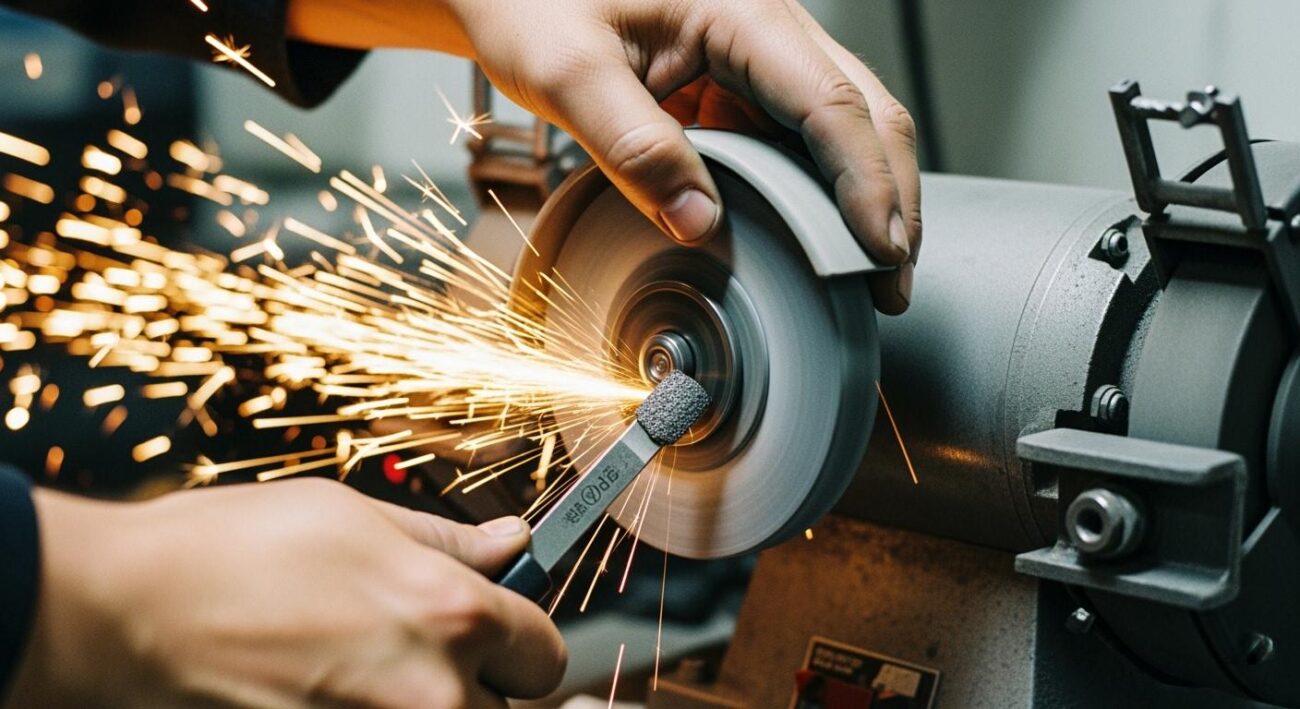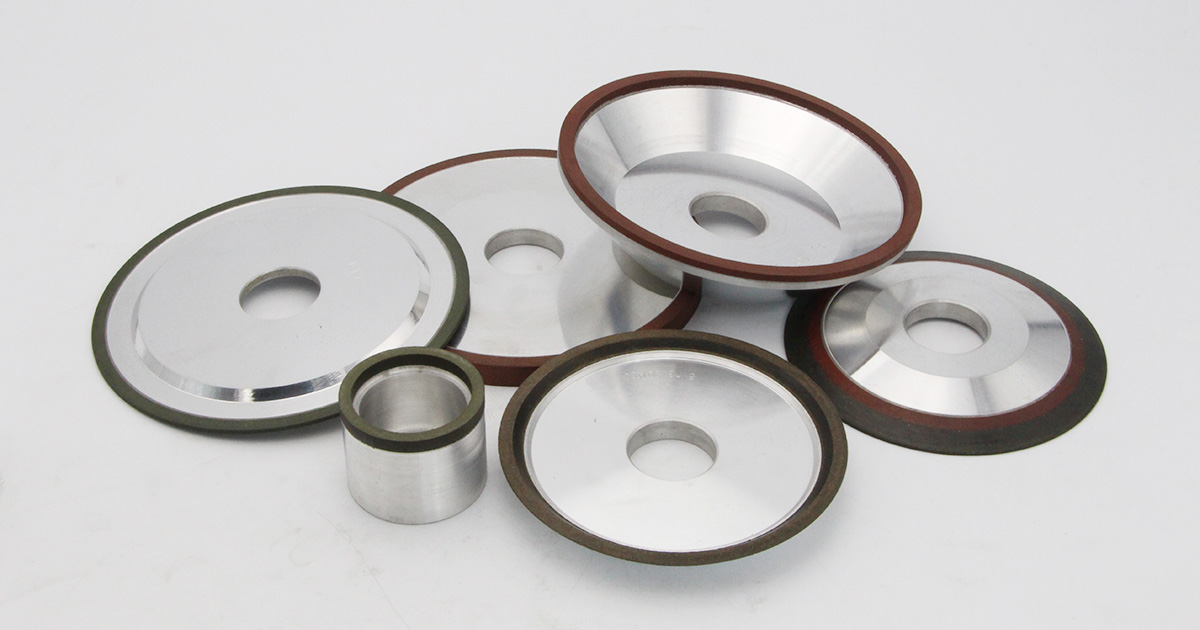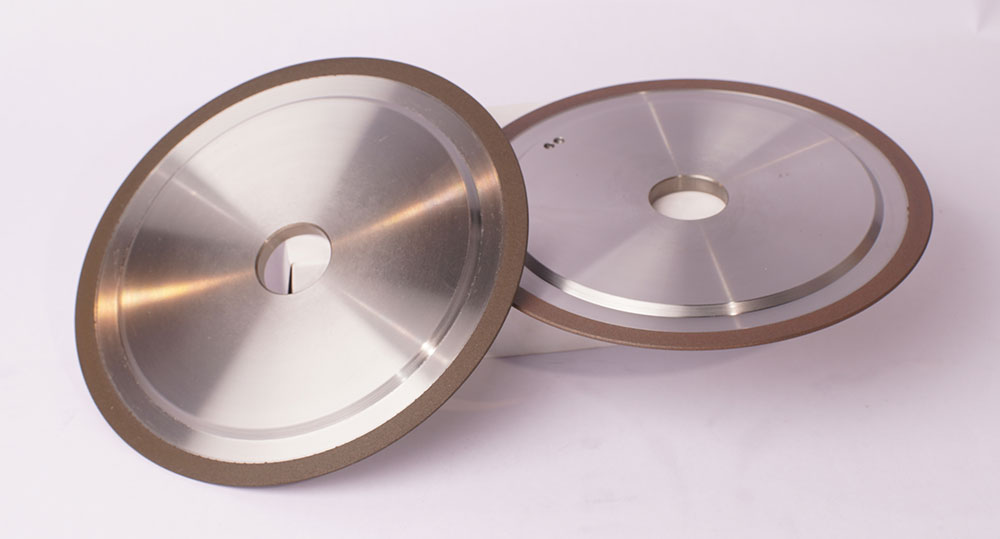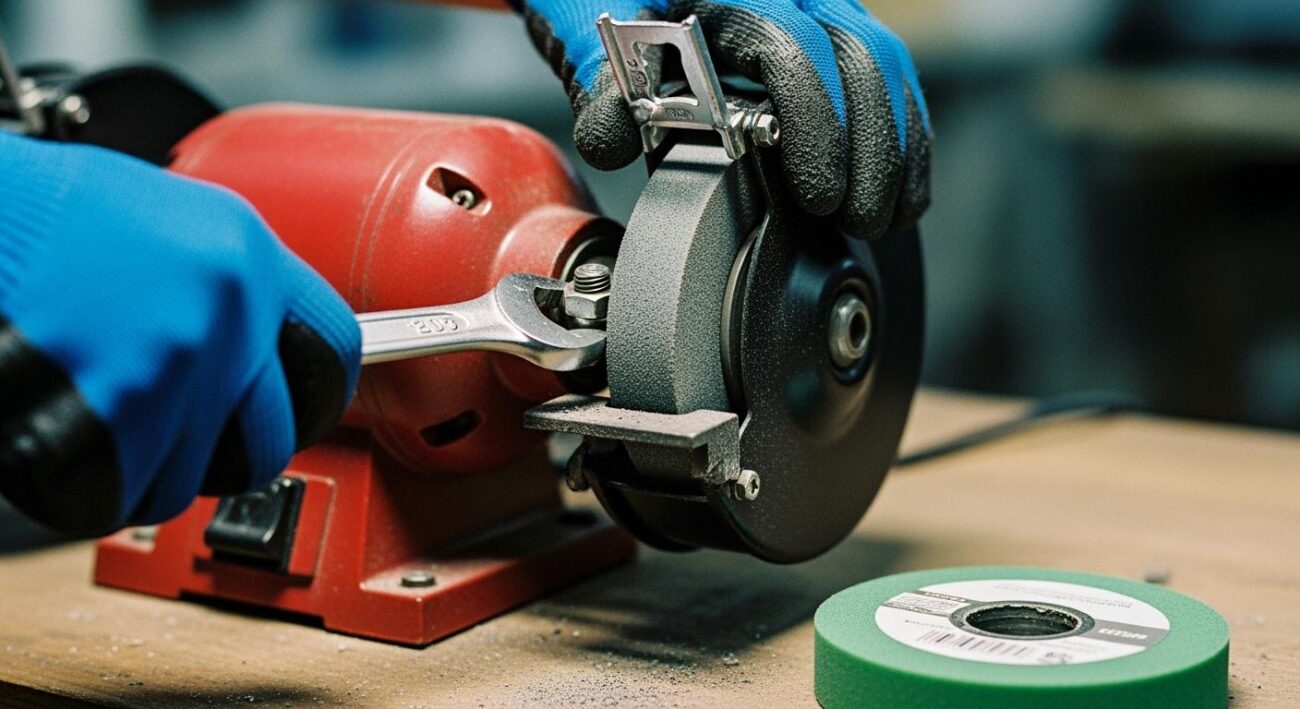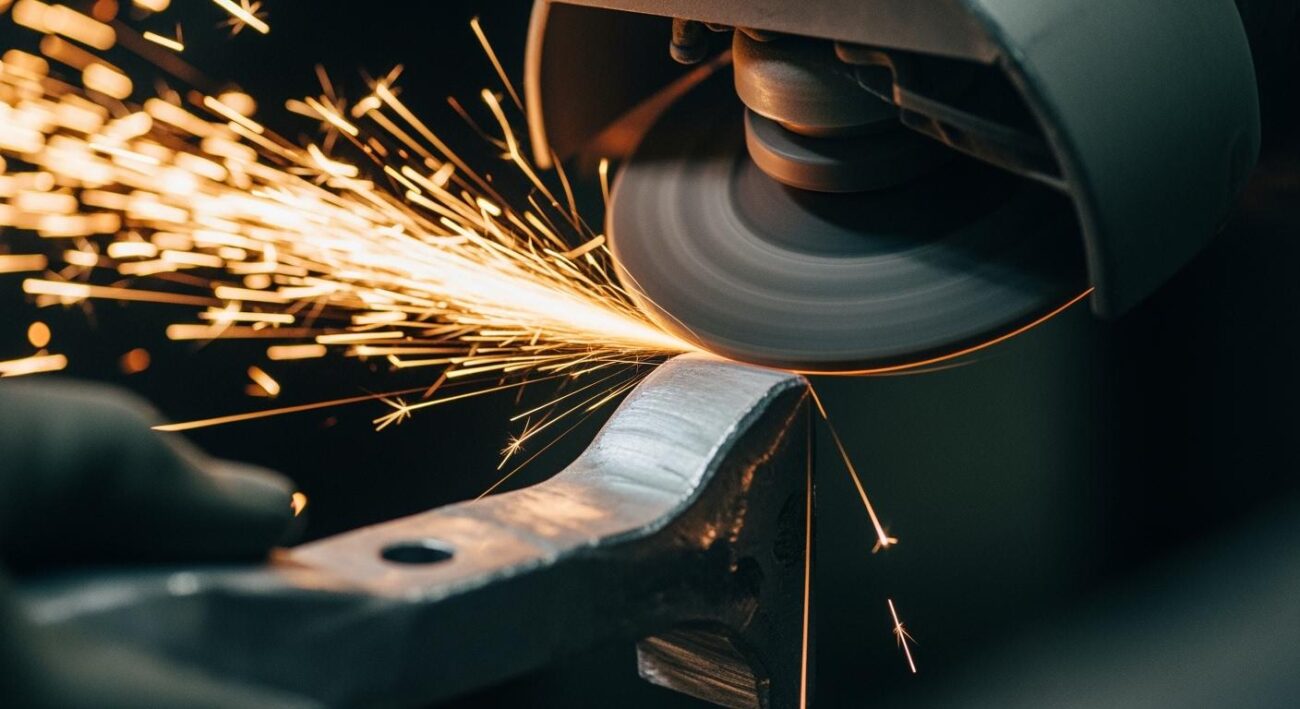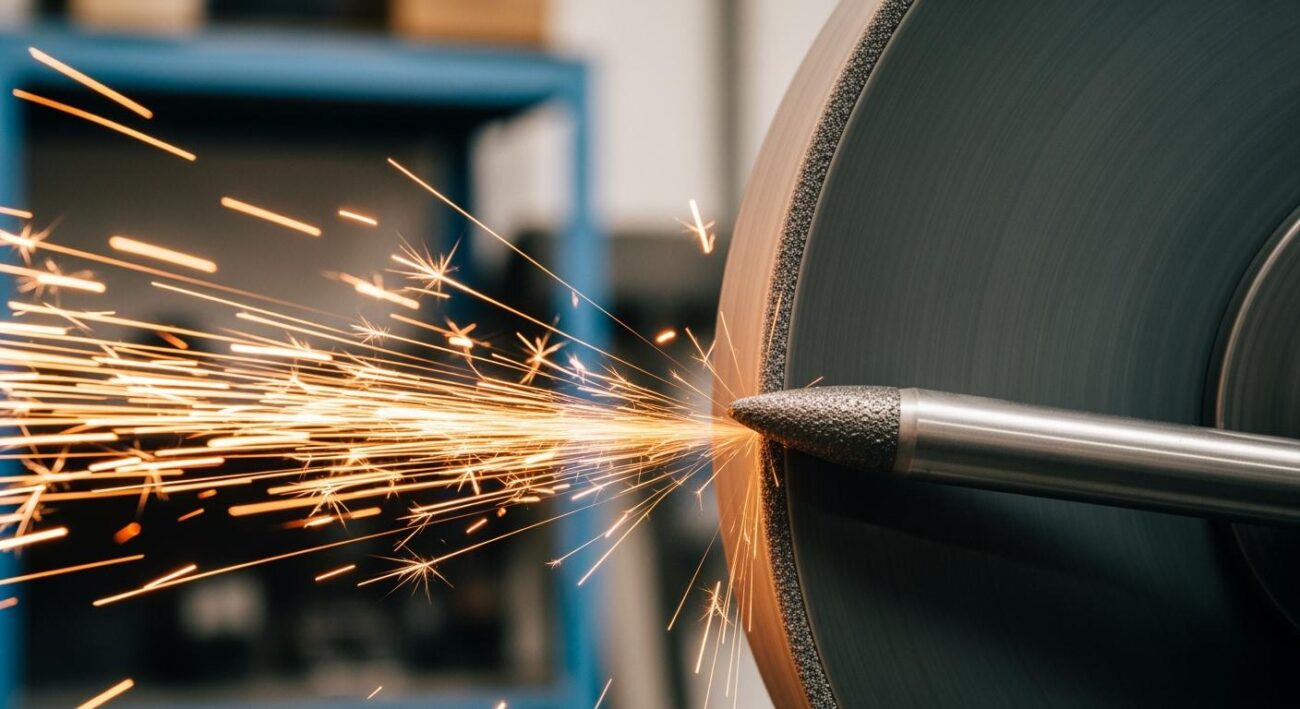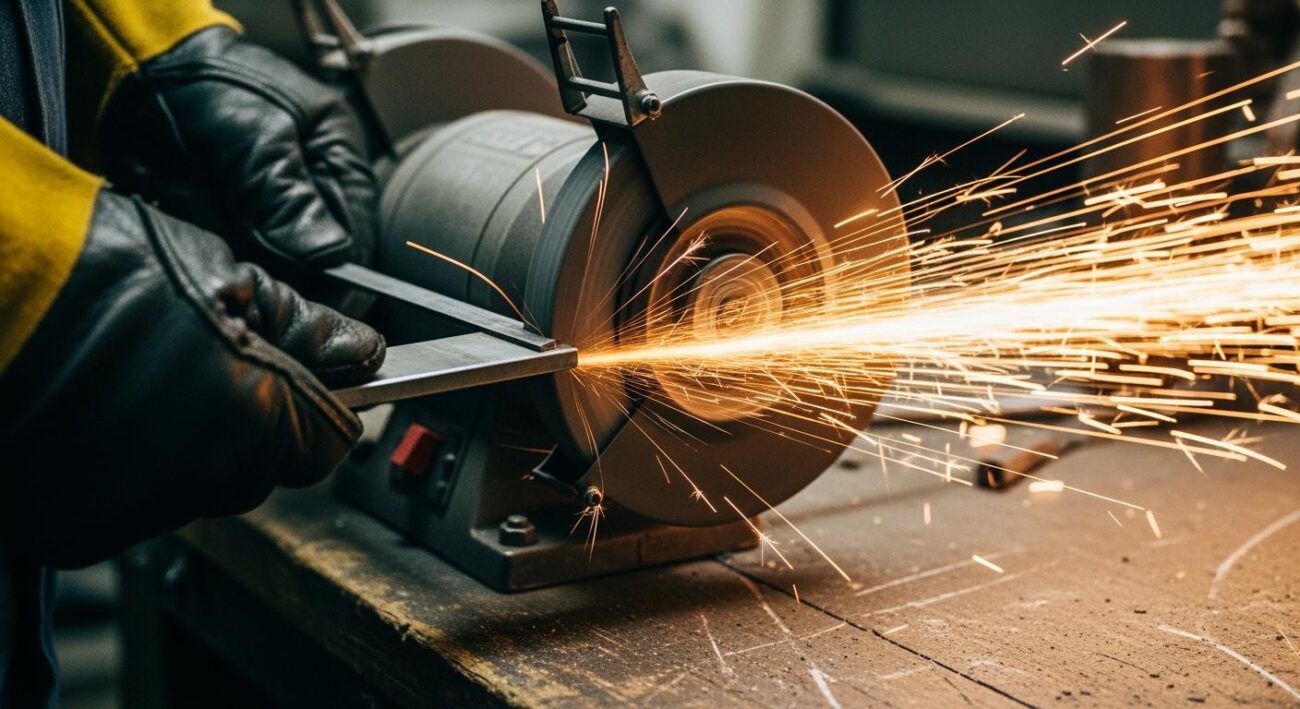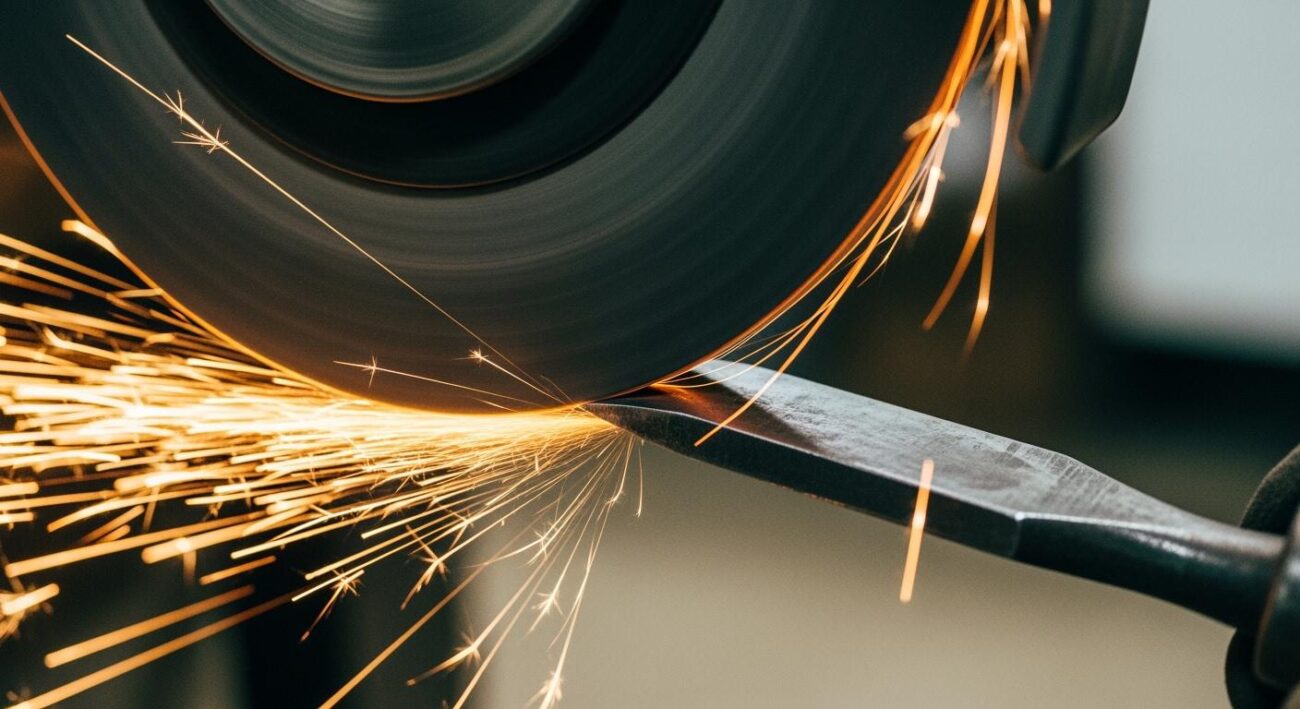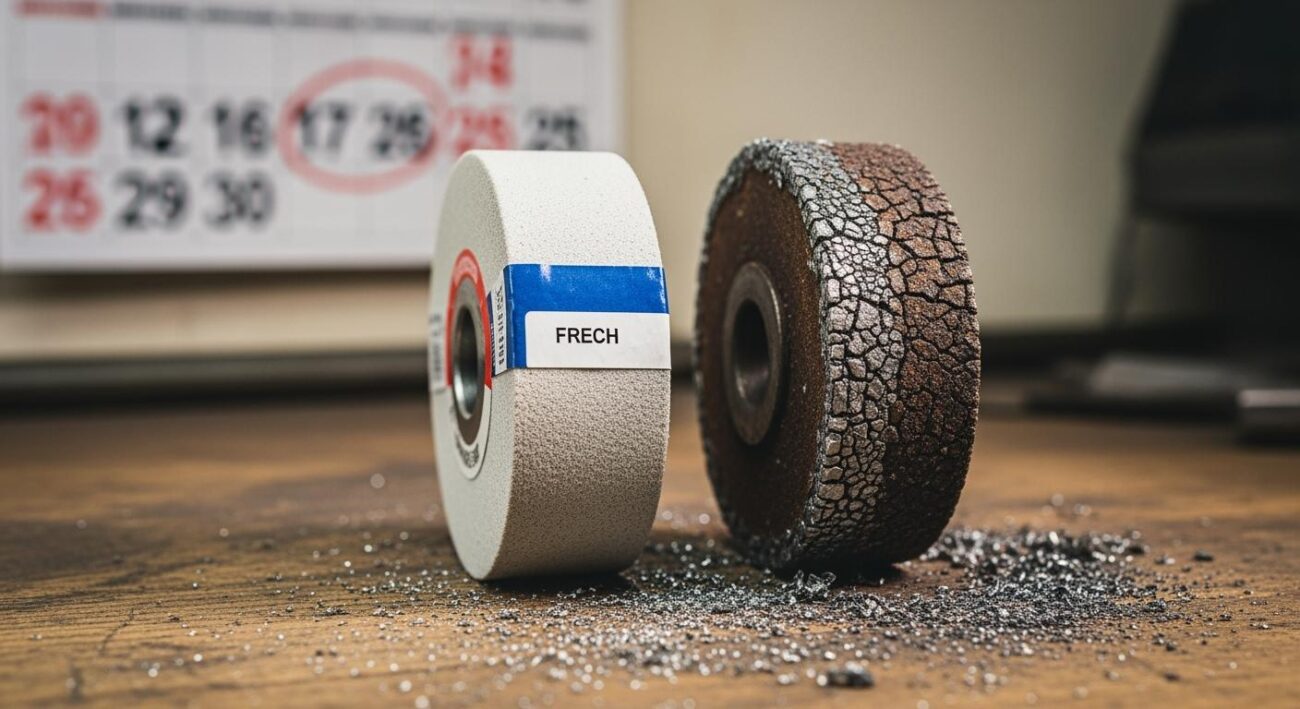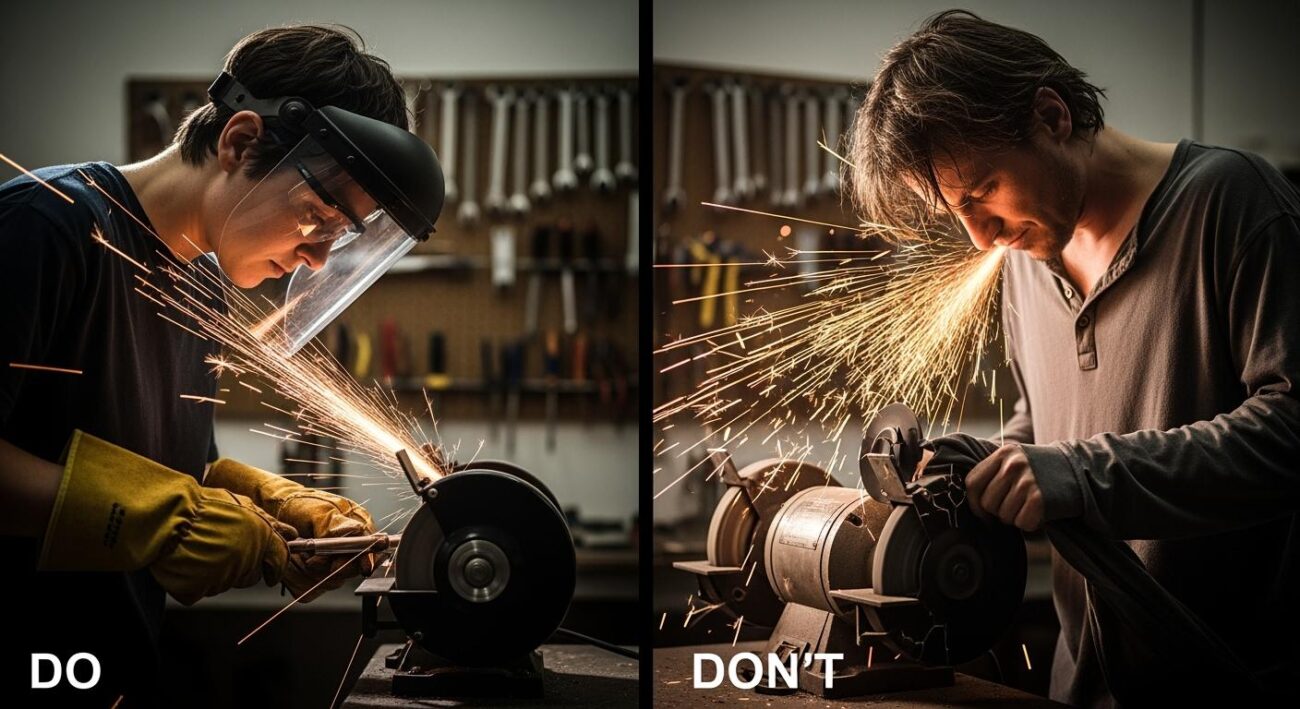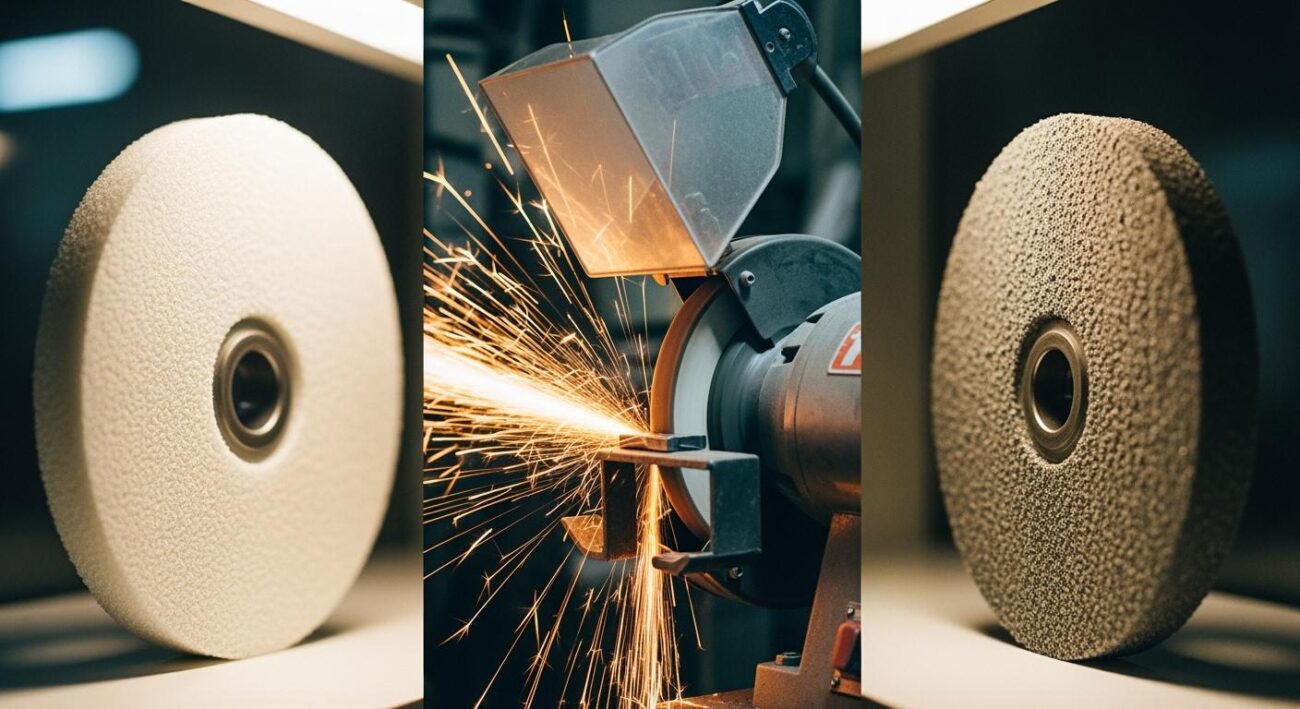There are nine common types of grinding wheels, each defined by its unique shape. The grinding wheel market continues to expand, with a projected compound annual growth rate of 5.2% from 2024 to 2029. This growth highlights the tool’s importance across many industries.
Note: People also classify the different types of grinding wheels using industry “Type” numbers.
Choosing the right grinding wheel involves more than just its shape. The abrasive material is another key factor. Understanding these two types of classifications helps ensure you select the best tool for your project.
Key Takeaways
- Nine common types of grinding wheels exist. Each type has a unique shape for different jobs.
- The abrasive material of a grinding wheel is important. It must match the material you want to grind.
- Diamond wheels are very hard. They cut tough materials like ceramic and glass.
- Angle grinders use special wheels. These wheels cut, grind, and finish surfaces.
- Always use safety gear when grinding. This includes eye protection and wheel guards.
Exploring the main types of grinding wheels
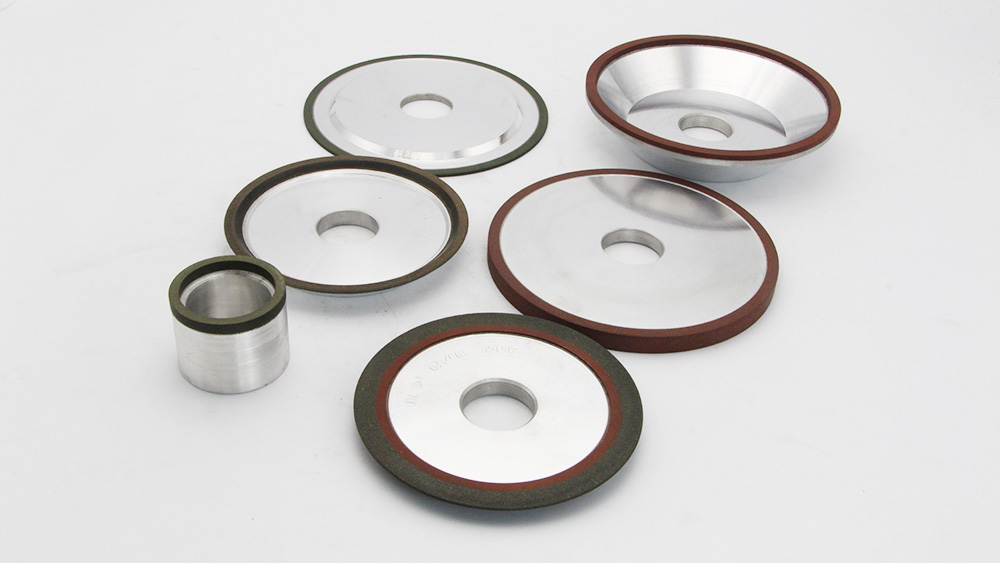
Understanding the different types of grinding wheels is the first step toward selecting the right tool. Each shape offers unique advantages for specific tasks. This section explores nine common types, their shapes, and their primary uses.
Straight wheels (Type 1)
The straight wheel is the most common type of grinding wheel. It has a simple, flat disc shape. The grinding action happens on the wheel’s outer edge, or periphery. These grinding wheels are staples in workshops everywhere.
- Primary Uses: People use them for general-purpose grinding and sharpening. Common tasks include sharpening tools like chisels and lawnmower blades.
- Common Sizes: Diameters often range from 4.5 to 9 inches. A typical thickness is about 1/4 inch, while some hybrid wheels are thinner at 1/8 inch.
Cylinder wheels (Type 2)
Cylinder wheels, also known as Type 2 wheels, have no center mounting hole. They are hollow cylinders used for producing flat surfaces. Operators use them on both vertical and horizontal spindle grinders. These wheels perform grinding operations exclusively on their rim face to achieve a smooth finish.
Tapered wheels (Type 4)
A tapered wheel features a profile that tapers outward from the center. This shape is not flat like a straight wheel. The tapered design provides enhanced stability and allows the wheel to handle forces from multiple directions. This makes it excellent for navigating tight spaces and corners. Industries that require precision often rely on these wheels.
- Aerospace: Grinding turbine blades.
- Automotive: Shaping gear teeth and engine camshafts.
- Medical: Grinding medical implants.
Straight cup wheels (Type 6)
The straight cup wheel has a distinct cup-like shape. It is designed for grinding on its side, or the rim of the cup. This tool is primarily used in tool and cutter grinders. Its main applications are re-sharpening and finishing. The abrasive size determines its suitability for specific tasks.
Safety Tip: Always grind on the side of a cup wheel. Never use its flat back for grinding. This is different from a straight wheel, where grinding occurs on the face.
Dish cup wheels (Type 12)
A dish cup wheel looks like a shallow dish or bowl. It has a very thin grinding edge. This shape allows it to fit into narrow slots and crevices. Technicians use it for cutter grinding, especially when working on tools with tight clearances. Its unique profile is ideal for precision work.
Saucer wheels (Type 13)
The saucer wheel, or Type 13, is another specialized tool. It looks like a saucer for a teacup. This wheel is mainly used for tool maintenance. People often call it a “saw gummer” because its primary job is sharpening the teeth on milling cutters and saws. Its straight edge portion is very effective for these applications.
Diamond wheels
Diamond wheels are an essential abrasive cutting tool for working with extremely hard materials. Diamond is the hardest known substance. This hardness allows the wheel to cut materials like carbide, glass, and ceramics with precision and a high-quality finish. These wheels last longer than other types. They are available with different bonds.
| Feature | Resin-Bond | Metal-Bond |
|---|---|---|
| Durability | Lower | High |
| Finish | Smoother | Rougher |
| Best Use | Polishing & Finishing | Heavy-Duty Grinding |
Resin-bond diamond cutting wheels offer fast material removal, while metal-bond wheels provide exceptional durability for heavy-duty jobs like creating concrete grinding wheels.
Mounted wheels and points
Mounted wheels and points are small grinding wheels attached to a permanent shaft or mandrel. They are designed for high-speed die grinders. Their small size allows for intricate work and internal grinding. Common uses include:
- Deburring and finishing in foundries.
- Polishing and precision grinding in the aerospace and automotive industries.
- Tool and die shop applications.
While not discussed in detail here, wire wheels are another tool often used with die grinders for cleaning and surface preparation.
Cut-off wheels
Cut-off wheels are thin, self-sharpening wheels designed for slicing and cutting. They are often reinforced with fiberglass for safety and strength. These wheels can cut through metal bars, bolts, and sheets. It is critical to match the wheel’s maximum operating speed to the tool’s speed. For example, a 9-inch reinforced cut-off wheel might have a maximum safe speed of 6,600 RPM.
These nine types of grinding wheels cover most applications. For unique challenges, specialized brands like Aimgrind can provide customized grinding solutions to match specific equipment and materials.
Common types of angle grinder wheels
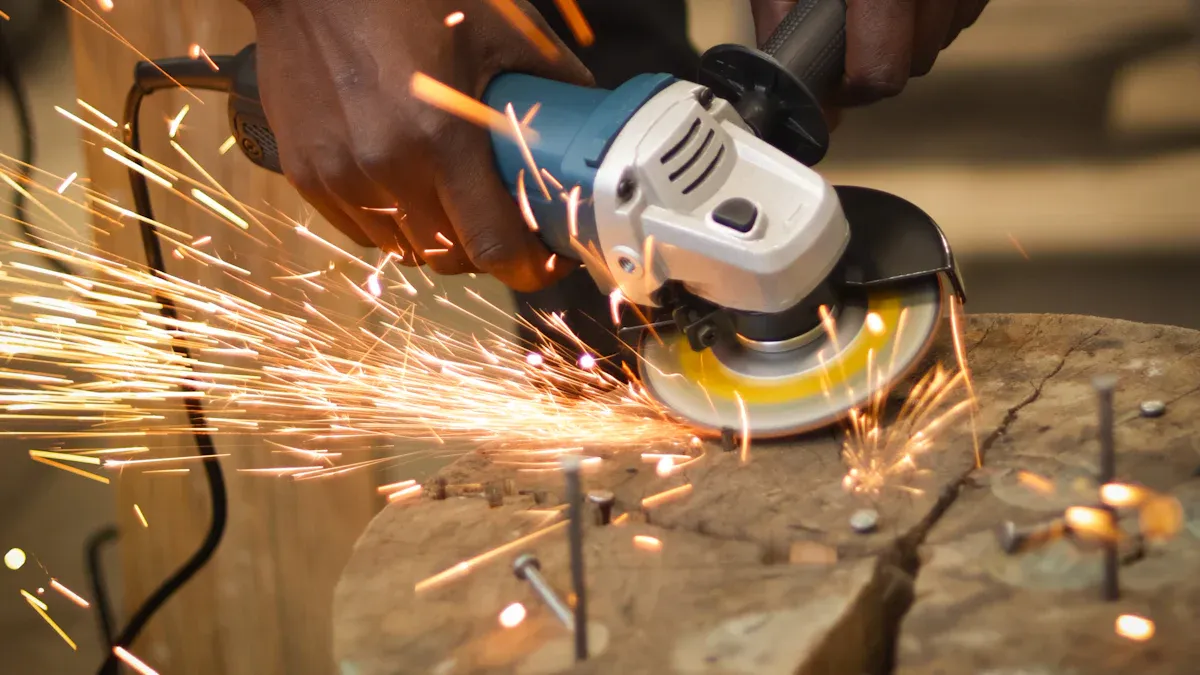
Angle grinders are versatile tools that use a specific subset of wheel types. These accessories focus on cutting, grinding, and finishing tasks. Understanding the common types of angle grinder wheels helps users select the right tool for the job. The main categories include grinding wheels, cut-off discs, and flap discs.
Grinding wheels (Type 27 & 28)
These are the workhorses for material removal. A Type 27 grinding wheel is the most common choice for rough grinding and heavy stock removal. The Type 28 wheel has a saucer-like shape, making it better for finishing and smoothing large surfaces.
| Feature | Type 27 (Depressed Center) | Type 28 (Saucer Depressed Center) |
|---|---|---|
| Primary Use | Rough grinding, heavy stock removal | Grinding large surfaces, finishing |
| Best For | Hard grinding jobs in construction and metalworking | Weld smoothing, beveling, and sharpening |
Cut-off discs (Type 1 & 41)
Cut-off discs are thin wheels designed for slicing through metal. Type 1 and Type 41 discs are both flat, which allows for the maximum depth of cut. They are efficient for general-purpose metal cutting. The main difference is that a Type 1 wheel mounts closer to the guard. This position can sometimes make it harder for the operator to see the cutting line. These types of discs are essential for many fabrication jobs.
Safety First! 🛡️ Always follow safety standards to prevent injury. The American National Standards Institute (ANSI) B7.1 standard outlines the proper use and care of abrasive wheels.
- Always use an ANSI B7.1 compliant wheel guard.
- Position the guard to protect yourself from debris.
- Only use wheels for their designed purpose.
Flap discs (Type 29)
Flap discs, sometimes called flap wheels, are unique because they grind and finish at the same time. This two-in-one action saves time and money. A Type 29 flap disc has a conical shape. This design ensures full contact between the disc and the workpiece for aggressive material removal and a smooth finish. Common grit sizes for these angle grinder wheels and discs include:
- Heavy stock removal: 36-60 grit
- Weld blending: 40-60 grit
- Deburring and rust removal: 60-80 grit
- Fine finishing: 80-120 grit
Angle grinder wheels and discs
Beyond these main types, other options like wire wheels exist for cleaning and surface preparation. Choosing the correct accessory from the various angle grinder wheels and discs ensures efficiency and safety for any project.
Choosing grinding wheels by abrasive material
Selecting the right abrasive material is just as important as choosing the correct wheel shape. The material of the workpiece determines the best abrasive for the job. Each abrasive type has unique properties suited for different applications.
Aluminum oxide
Aluminum oxide is a versatile and widely used abrasive. It is tough and durable, making it an excellent choice for grinding ferrous metals like steel and stainless steel. There are several common types:
- Brown Aluminum Oxide: The toughest and most economical option, ideal for rough grinding.
- White Aluminum Oxide: A purer, more friable grain that cuts freely and is great for precision work.
- Pink Aluminum Oxide: A durable grain that offers consistent performance for general-purpose grinding.
Silicon carbide
Silicon carbide is harder and sharper than aluminum oxide. This abrasive is the top choice for grinding non-ferrous metals like aluminum and brass, as well as cast iron. Its sharp grains provide a cool, clean cut that prevents softer metals from deforming.
Ceramic alumina
Ceramic alumina is a premium, high-performance abrasive. It has a unique micro-crystalline structure that allows it to self-sharpen as it breaks down. This property, known as high friability, results in a much faster material removal rate compared to aluminum oxide. It excels at grinding hard steels and superalloys.
Cubic boron nitride (CBN)
Cubic boron nitride (CBN) is a superabrasive, second only to diamond in hardness. It is the preferred choice for grinding hardened ferrous materials like high-speed steel and nickel-based superalloys.
Did You Know?
CBN has excellent thermal conductivity. This property helps it act as a heat sink, drawing heat away from the workpiece during high-speed grinding and preventing thermal damage.
Diamond abrasives from Aimgrind
For the hardest materials, diamond is the ultimate abrasive. Diamond grinding wheels are essential for cutting and shaping hard alloys, ceramics, and glass with extreme precision. For premier solutions, Aimgrind’s diamond cutting wheels deliver exceptional durability and a superior finish. They are engineered for demanding applications where precision is critical. Aimgrind offers customizable options with various bond types, including resin and metal, to perfectly match your needs, from fine polishing to creating heavy-duty concrete grinding wheels. You can explore their offerings at https://aimgrind.com/product-category/diamond-grinding-wheels/.
The main types of grinding wheels are defined by their shape. A user must also match the abrasive material to the workpiece for the best results. Understanding these factors is key to selecting the right grinding wheel for any cutting or finishing task. By choosing the correct tool from the various types available, a person can grind with passion and achieve with aim.
FAQ
What is a grinding wheel?
A grinding wheel is a tool made from abrasive particles bonded together. It rotates at high speeds to cut, grind, or finish various materials. The abrasive type and bond material determine the wheel’s specific use.
What are grinding wheels used for?
People use these tools for many tasks. Common jobs include sharpening tools, cutting metal, and finishing surfaces. Specialized types, like concrete grinding wheels, handle specific materials and applications like smoothing floors.
Are wire wheels the same as grinding wheels?
No, they serve different purposes. Grinding wheels use abrasives to remove material. In contrast, wire wheels use metal bristles for cleaning, deburring, and surface preparation. Users should not use wire wheels for grinding tasks.
How can a user stay safe when grinding? 🛡️
Safety is the top priority. A user must always wear proper personal protective equipment (PPE), especially eye protection. They should also use the correct wheel guard and match the wheel’s RPM to the tool’s speed.
Contact Us
For More Grinding Solution or Customized Abrasive Tools


